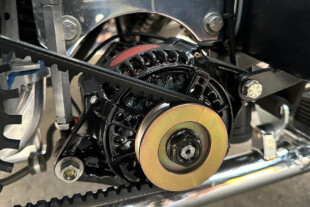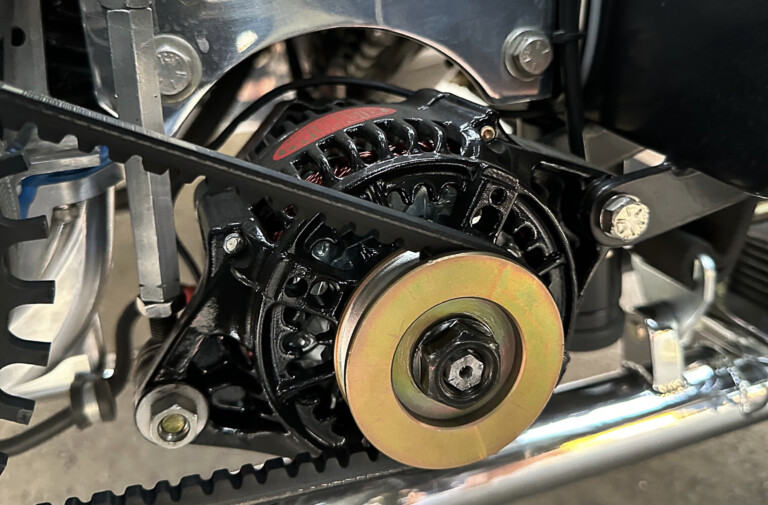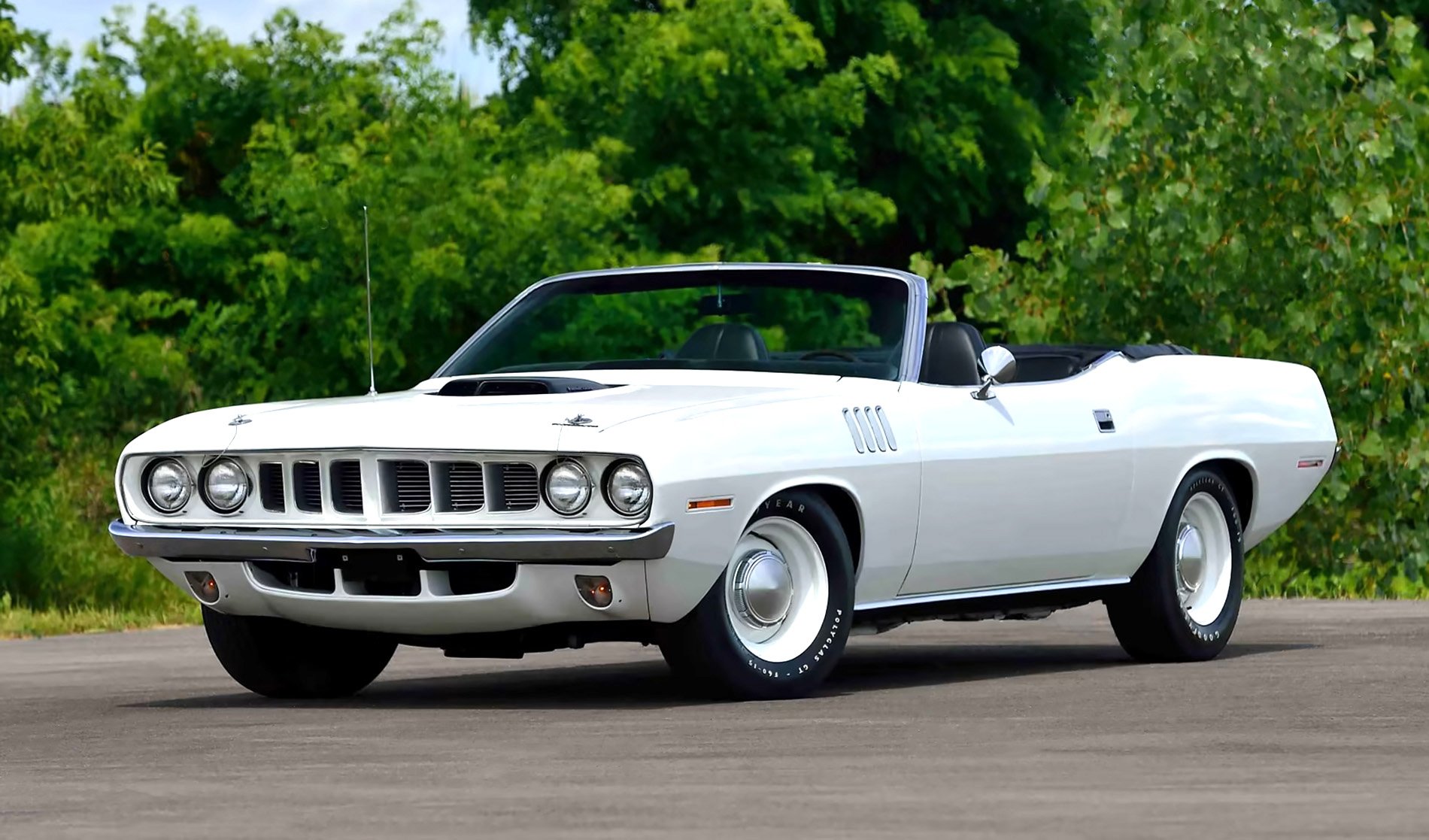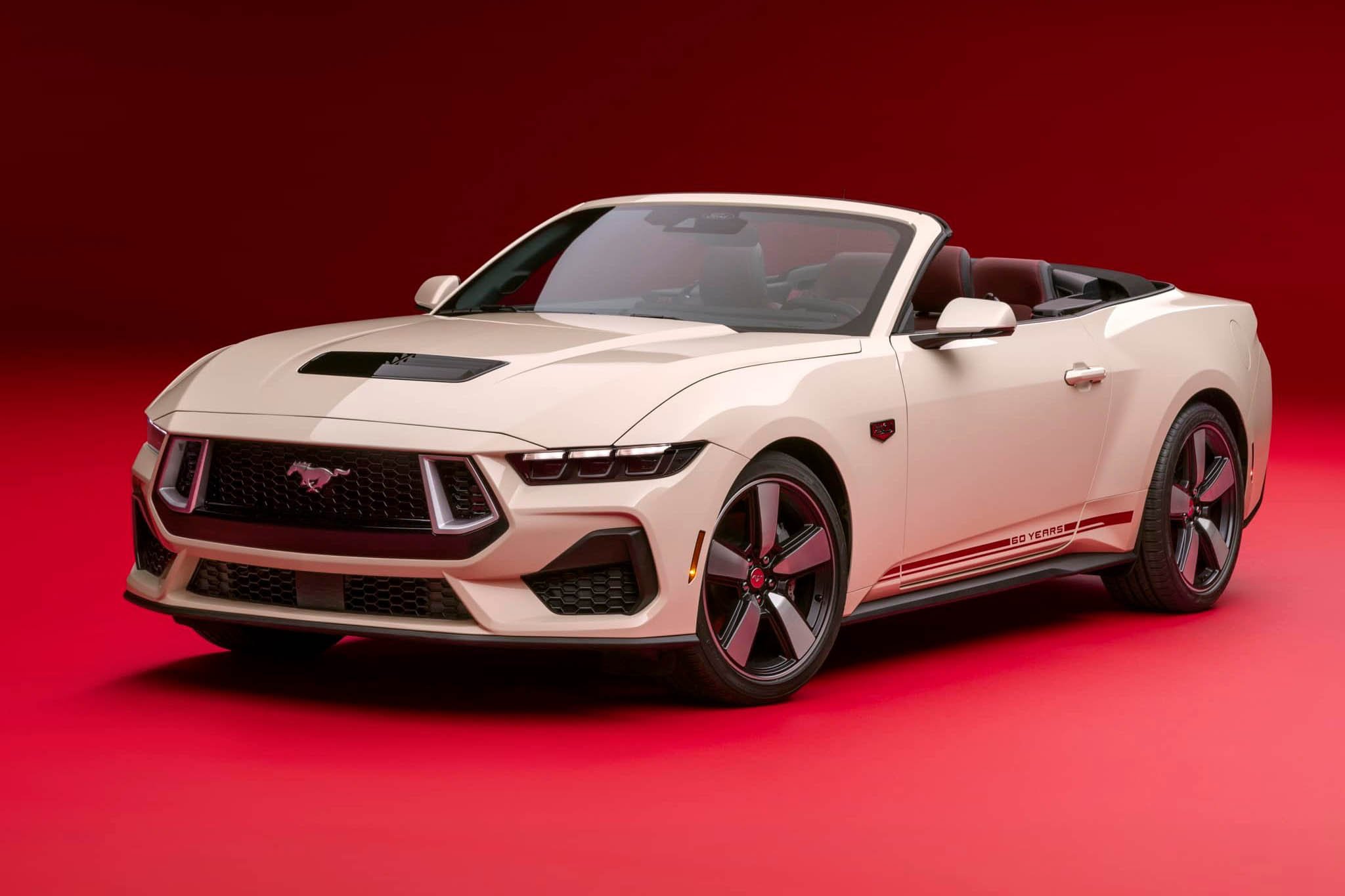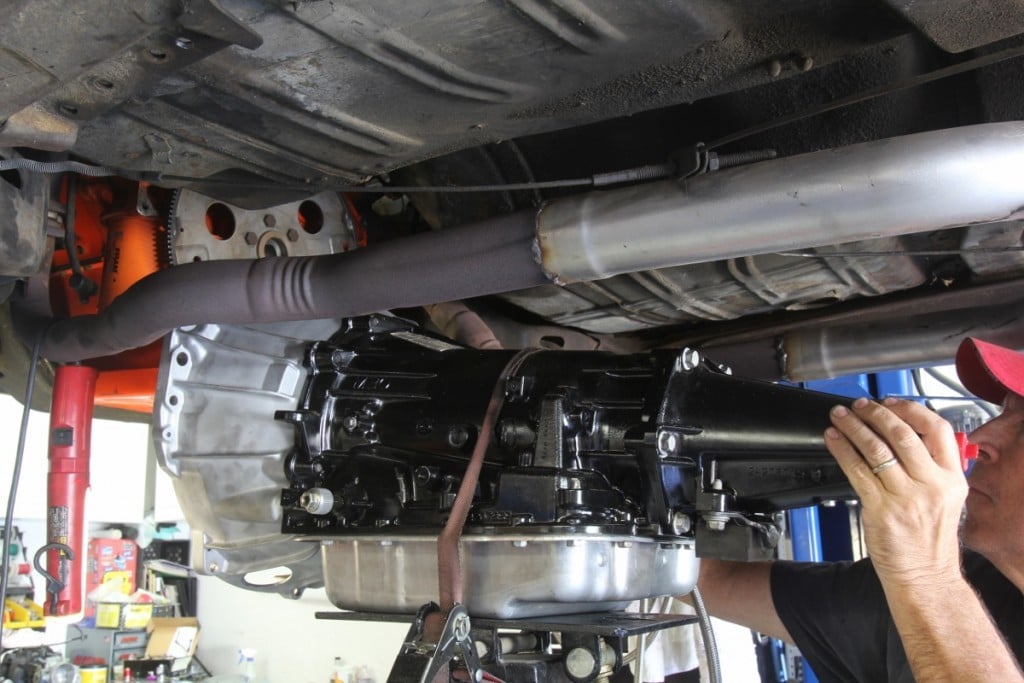
Thank the Chevrolet gods for interchangeability. With a simple twist of a few wrenches, you can either bolt a ’90s 4L60E behind a Gen I small-block, as we’re doing here, or you can run an older non-electronic trans behind a 21st Century LS engine. We’ll show you how it’s done.
Bolt any bowtie automatic to any Chevy engine – if you know the tricks
Words and Photos By Jeff Smith
For street cars, it’s all about overdrive these days. Everybody has a different take on the best automatic to use, which means there’s a huge world of opportunity for interchanging transmissions with Chevy engines. The current favorite son seems to be the 700-R4/4L60E four-speed automatic, but there are also places where a TH400 might be the best solution for a 1,500-hp, blown LS engine, or a simple 200-R4 fits best behind a 5.3L LS daily driver. As with all interchange stories, a successful swap is dictated by handling all the fine points. While most stories only deal with swapping behind LS engines, we’ve expanded that into covering the details on how to swap transmissions between all the generations of Chevy engines.
Transmissions are undergoing radical change these days. A two-speed Powerglide seems almost archaic now with the growth of GM six-, eight- and now 10-speed automatics, like what’s behind the 2017 ZL1 Camaro. This story will focus on the most affordable opportunities with the electronically-controlled four-speed automatics, like the 4L60E thru 4L75E, and touch on the 4L80/85E. While Chevrolet Performance carries the 8L90E in its catalog, unless this trans is used in conjunction with a Gen V (LT1 or LT4) engine and controller, the 8L90E is currently incompatible with all previous generation engines. So, don’t go out and buy one and expect to bolt it behind even an LS3.
Let’s start this swap tale with some basics. The traditional Gen I small- and big-block Chevy crankshaft arrangement extends the crankshaft flange 0.400 inch beyond the bellhousing face. The LS family of engines (with one exception that we will detail) places the crank flange flush with the bellhousing mounting surface. So, when bolting an older transmission like a Powerglide, TH350, TH400, 2004-R, or early 700-R4 to an LS engine, there will be a 0.400-inch gap between the flexplate and the torque converter.
Chevrolet’s simple solution for this was a steel spacer placed between the crankshaft flange and a flat LS flexplate. This became a Chevrolet part number for the production use of a 4L80E automatic behind LS engines in selected heavy-duty applications. Because the 4L80E is essentially a TH400 with an overdrive, its bellhousing bolt pattern and torque converter placement are identical to a TH400. The 4L80E, however, does use a much larger torque converter and mounting pattern, as we’ll see.
This creates essentially two different LS flexplates. The most common design used with flush crankshaft flanges is concave exactly 0.400 inch. The 1999-2000 truck extended crank flange engines used a flat flexplate, but because the crank flange is extended 0.400 inch, this flat design places the starter ring gear in exactly the same position as the flush flange, concave design.
To accommodate an older transmission where the crankshaft flange is extended, Chevrolet created a 0.400-inch steel spacer to be used with the most common LS engines using a flush crankshaft. This spacer is located between the crank flange and the flexplate and is used in conjunction with a flat LS flexplate. This adapter also requires longer bolts. We’ve listed both the GM and ARP bolts in our parts list.
Using the flat LS flexplate will require minor elongation of the three converter mounting holes, since an LS converter uses a wider bolt pattern than either of the traditional Powerglide/TH350 or TH400 versions. We’ve listed all the converter patterns in a separate chart. Elongating the LS flexplate converter holes inboard is a minor effort that can be accomplished with a rat-tail file or a high-speed die grinder, but its best to accomplish this before you torque it in place on the engine.
As with many things, there’s an even easier way to accomplish this same task. Because LS engines employ a dished or concave flexplate that is exactly 0.400 inch deep, this places the flexplate converter attachment position in the proper place for the converter. However, the converter pilot hub comes up short by that same distance. Several companies offer a machined aluminum adapter that nestles in the crankshaft and extends to perfectly adapt to the standard Chevy converter hub dimension. TCI sells this pilot adapter for under $30, which is as much as $20 less than other adapters.
Of course, not everybody wants to use an older trans behind an LS engine. Turning this situation around, there’s a rapidly growing demand for the 4L60E four-speed overdrive behind older small-block engines. This requires a little research into the 700-R4/4L60E history, since this trans has evolved in several ways. As you know, the 700-R4 has been around since the early ’80s. Originally, it used an integral bellhousing with a small-block/big-block pattern.
In 1993, GM converted its 700-R4 four-speed to full electronic control, renamed it the 4L60E, and also retained its integrated bellhousing. When the LS engines appeared in 1997, the trans case changed to a bolt-on bellhousing to accommodate the LS engine’s revised bolt pattern. This also included a change in the torque converter diameter and flexplate attachment pattern. The large diameter converter pattern for the TH400 is an 11.5-inch pattern, while this new LS converter pattern is slightly smaller at 11.1 inches.
The easiest way to adapt an electronic 4L60E to an earlier Gen I small- or big-block Chevy is to use one of the earlier small-block 4L60E boxes located behind small-blocks used in trucks and pre-’98 cars. The traditional small-block six-bolt bellhousing pattern is the best and easiest way to identify a 4L60E style transmission if you find one at the swap meet for sale.
Starting in 1996, many 4L60E transmissions employed a bolt-on bellhousing. All of the 1998-up cases used behind the LS family of engines used the separate bellhousing style of case. Both 298mm and 300mm converters were used with these later 4L60E transmissions, and it’s critical to know exactly which transmission you have to make sure the converter is compatible with the input shaft. The 298mm converter is used behind the traditional GEN I or GEN II small-block engines, while the LS applications employ the 300mm converter and corresponding input shaft. Beginning in 2007, the 4L70E transmissions upgraded the input shaft with an integrated input shaft speed sensor. If the converter and input shaft are not compatible, there will be fitment issues that will prevent you from using the torque converter in the transmission.
Because the LS trans is designed to bolt up to an LS engine, using an LS-style 4L60E trans behind a traditional small- or big-block Chevy used to present problems. But recently, both Chevrolet Performance and Lakewood have come up with a solution. Chevrolet Performance offers an LS kit that uses an aluminum spacer to move the transmission back 0.400 inch to accommodate the Gen I small-block’s deeper crankshaft flange. This also creates space to accommodate the deeper (thicker) LS-style 300mm torque converter.
This kit is designed specifically to adapt the late model LS 4L60E to a one-piece rear main seal small-block Chevy. This is specific because the one-piece rear main seal crankshaft bolt pattern is different than the older two-piece rear main seal bolt pattern (See Crank Flange chart). The Chevrolet Performance kit consists of a 0.400-inch thick aluminum spacer, flexplate, longer dowel pins, and fasteners.
If plans call for adapting this same LS trans to a two-piece rear main seal small- or big-block Chevy, there’s a slightly different route. Lakewood now sells a 0.400-inch thick steel transmission spacer that works just like the Chevrolet kit and comes with longer dowel pins and bolts, along with additional 0.400-inch thick spacers that will take up the space between the converter and the flexplate. With the spacer, you will also need a two-piece rear main seal flexplate. Find a 168-tooth flexplate that offers both the large and small torque converter patterns. The larger pattern can then be slightly elongated inboard to adapt to the 11.1-inch LS-style converter pattern.
All of these swaps involve interchanging flexplates and torque converters, and this can get a bit confusing. The attached charts spell out the different bolt patterns, as well as the converter patterns.
This outline should cover most of the more popular swap combinations, although there are probably a few that we have missed. But armed with the information in this story, these details should offer some guideposts for what to look for in terms of bellhousing depths, crankshaft bolt patterns, and torque converter differences. For the rest, you’ll have to accommodate with good old fashioned hot rod ingenuity.
Chevy Crank Flange Bolt Patterns
| Engine / Crank Flange | Pattern (inches) |
| SBC / BBC – 2pc seal | 3.58 |
| SBC/ BBC – 1 pc seal | 3.00 |
| LS 6-bolt | 3.11 |
| LSA/LT1/LT4 8-bolt | N.A. |
| LS9 9-bolt | N.A. |
Chevy Torque Converter Bolt Patterns
| Torque Converter Application | Pattern (inches) |
| PG/TH350 small | 10.75 |
| TH400 large | 11.50 |
| LS –early 281mm | 11.07 |
| LS – late 300 mm(4L80E) | 11.5 |
To determine your torque converter bolt pattern, measure from the crank centerline to the centerline of one converter bolt hole and multiply by 2. So, if the distance is 5.75 inches x 2 = 11.5 inches. A 11.50-inch flexplate can be modified to work with the 281mm (11.07 inches) converter pattern by slightly elongating the holes inboard. Be aware the external balance weights for 383c.i. and/or 400c.i. small-block Chevys on some aftermarket flexplates do not clear the metric converter bolts for a 4L60E converter. The TCI flexplate for this external balance application (PN 399373) is designed to clear the metric fasteners.
Parts List
| Description | PN | Source | Price |
| Chevrolet Perf. flexplate spacer | 12563532 | Summit Racing | $40.97 |
| GM flexplate for spacer | 12551367 | Jeg’s | $54.99 |
| GM metric flexplate bolts (6) | 19257940 | Summit Racing | $6.97 ea. |
| Chev. Per. LT1 to 4L80E adapter kit | 191225597 | Jeg’s | $460.06 |
| Lakewood LS spacer kit | 15901 | Summit Racing | N.A. |
| Chevrolet Performance LS spacer kit | 19154766 | Summit Racing | $285.61 |
| Hughes SFI flexplate, 168-tooth | HP4004X | Summit Racing | $156.97 |
| Hughes crankshaft LS hub adapter | HP3795 | Summit Racing | $47.97 |
| TCI Gen III/IV flexplate w/spacer & bolts | 399753 | Summit Racing | $268.97 |
| TCI Gen III/IV pilot extension | 399753PE | Summit Racing | $28.97 |
| ARP LS crank flexplate spacer bolts | 244-2902 | Summit Racing | $26.10 |
| ARP Gen III/IV LS flex plate bolts | 244-2901 | Summit Racing | $24.40 |
| ARP SBC 2 pc seal flexplate bolts | 100-2901 | Summit Racing | $10.65 |
| ARP SBC 1 pc seal flexplate bolts | 200-2906 | Summit Racing | $15.28 |
| ARPLT1/LT4 Gen V flexplate bolts | 234-2902 | Summit Racing | $31.60 |
Sources: Automotive Racing Products (ARP), arp-bolts.com; Chevrolet Performance, Chevrolet.com/performance; Holley Performance Products (Lakewood), holley.com; Hughes Performance, hughesperformance.com; TCI Automotive, tciauto.com
Get more Power & Performance News on our Facebook page, Instagram, and Twitter.



